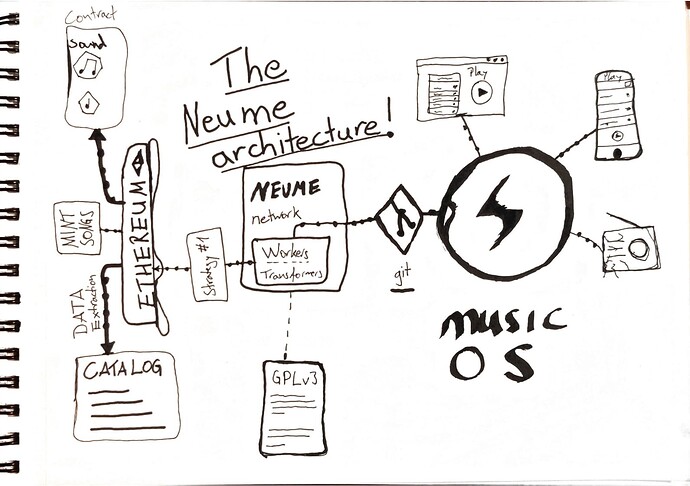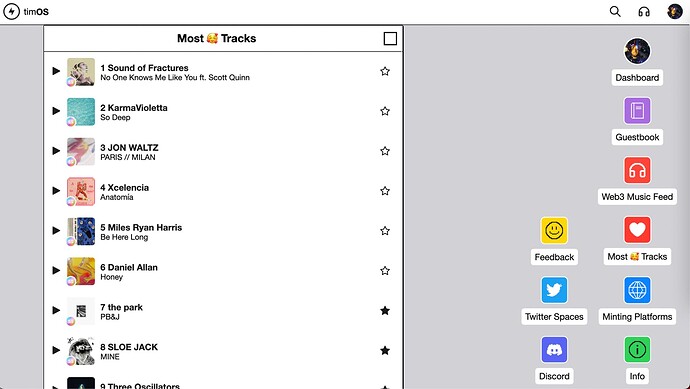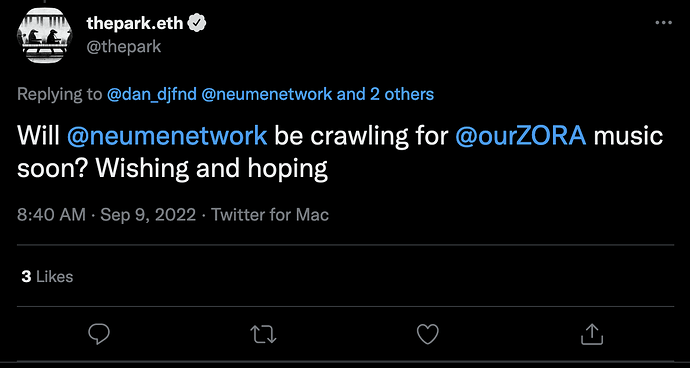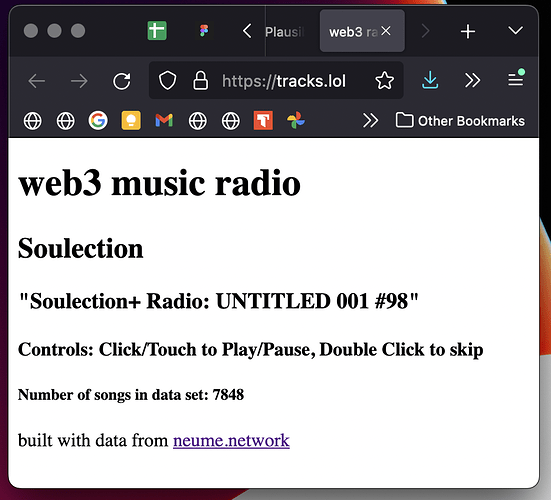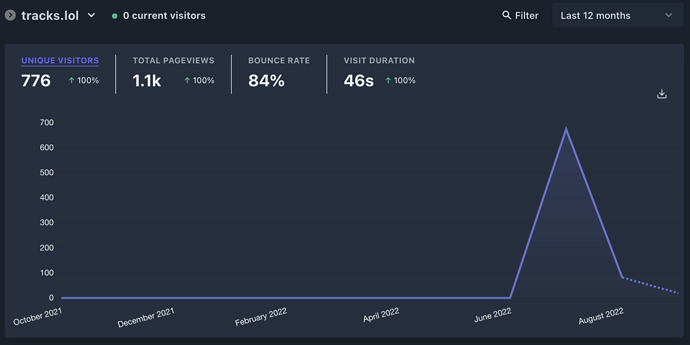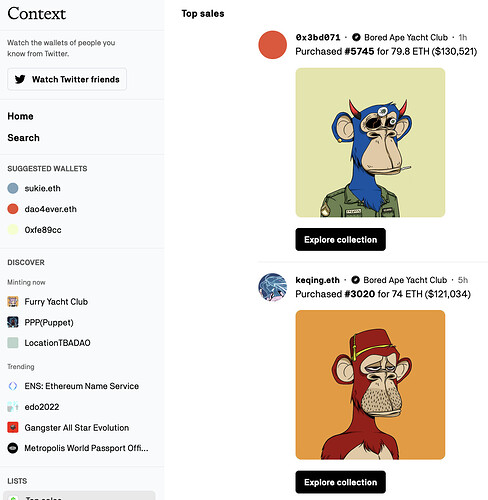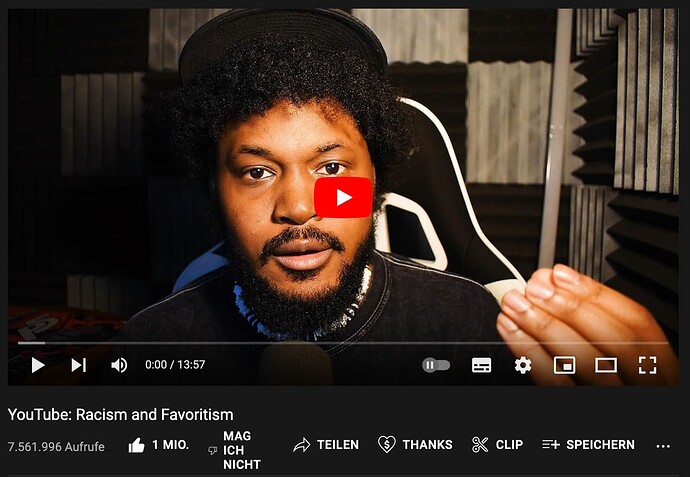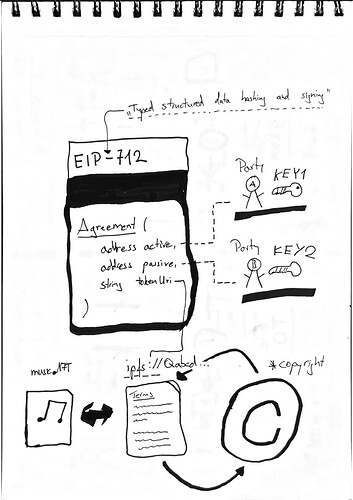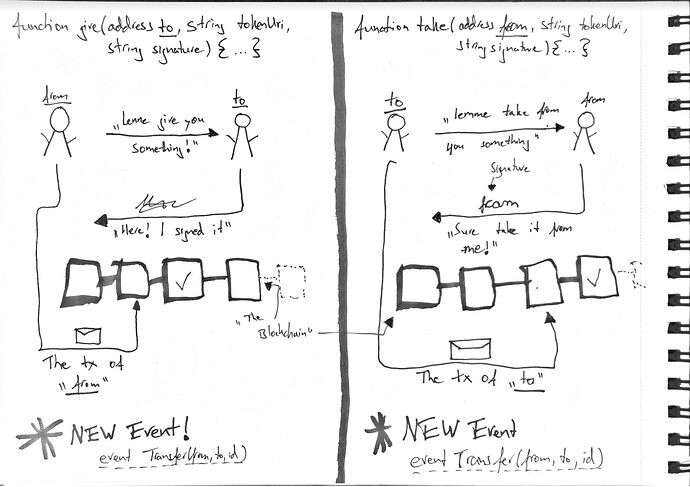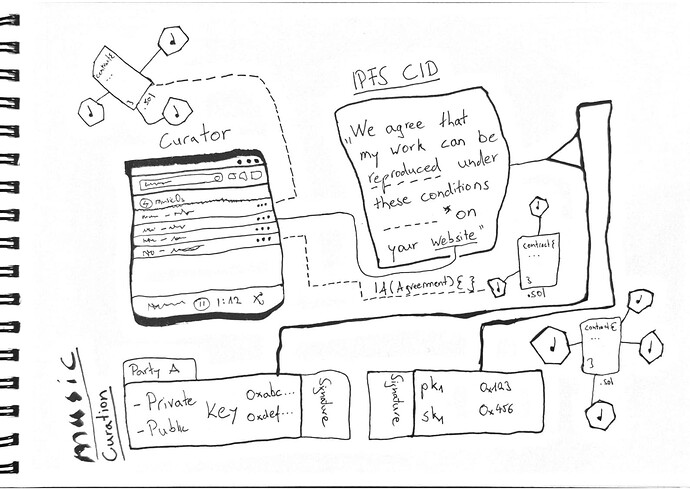@dror, thanks for your comment it’s all relevant and valid. I’ll respond to it in more detail in the future.
How EIP-4973 Account-bound tokens could drive curation in the music NFT industry
In the following post, I want to highlight a problem we’ve encountered in the music NFT industry. As a quick aside, these days, I work as a tech lead on https://neume.network, and we’re essentially building a socially scalable data pipeline to extract and augment on-chain data. For all of the music NFTs hosted on Ethereum, in contrast to the Graph Protocol, at Neume, we’re not trying to make contract storage data more accessible. Instead, we want to build a list of music NFTs that users can listen to via an app like Spotify.
A quick disclaimer: My work on Neume Network is financed by hifilabs.co, and they’re creating https://musicos.xyz, an audio player built on the music NFT data that we’re indexing with the Neume Network software.
Now: As it’s a lot of work to extract music metadata from smart contracts, today we got some users’ feedback, and to my surprise, it sounded like we had unconsciously optimized for indexing the big curated music NFT platforms like https://sound.xyz, https://beta.catalog.works/, https://zora.co/, and https://www.mintsongs.com/ V2.
But truly, this was never our intention: But I was caught off guard by the user feedback, and so this post is somewhat a reflection on what happened and led to problematic emergent effects.
See, for https://musicos.xyz, as it’s an audio player like Spotify, we naturally wanted to index the best possible and probably also most popular platforms. So when starting the project, we intuitively went for the popular ones - those that we knew provided nicely sounding songs.
And when they launched musicos a few days ago, I suddenly found myself confronted with the following user feedback questioning the credible neutrality of the Neume Network indexer. Here’s what users said:
Additionally, an artist I am I fan of had this to say on Twitter:
Welcome to the Machine… The “Attention Economy”
So let us unpack what is being discussed here. In my own words: Guspy, Supersigil, and thepark.eth are all asking for their tracks to be listed on the music-os app we had just released. And they did so by pointing out an interesting dynamic in the music NFT space. guspy mentions that the music they had minted through a custom contract on https://www.manifold.xyz/ isn’t showing up on music-os. They’re saying that having their contract being indexed is posing a challenge: And that instead, had they minted their song on Catalog, Sound, or MintSongs, then it probably would have made it into music-os.
Extrapolating their statements here, too, we can reason that any track that gets lots of exposure through a music player may fare better on first and secondary sales. So potentially, for guspy et al., having their songs exposed on music-os can potentially mean an improvement in income. Or anyways that their songs are listened to at all.
In the post by Supersigil below, they help double down on the argument, namely that artists need to be given the option to “be their own platforms” and that hence the favoritism of Neume Network to implement the big music NFT platforms first is a challenge to all artists hosting independent contracts.
There’s also an interesting insight in their posts: Namely that the platforms are curated by genre or type of music. And so, despite some artists’ work having the potential for popularity - they may never end up being exposed to larger audiences given the moderation policies of the respective platforms.
Experimenting with Music NFTs
And there’s actually more context to unpack here: Historically, the big platforms like sound.xyz and catalog.works have been heavily curated - or at least that’s how their music sounds to my ears. I can back this up with visitor data, too, as I had played around with a minimalist website that allowed users to listen to sound.xyz and catalog.work’s songs on a website I called https://tracks.lol.
For a brief moment in time after its release, it gathered a notable listener community and was widely shared on Twitter despite the website having any meaningful web design or other functionality. Below’s a screenshot of the page, or you can see it yourself by visiting: https://tracks.lol:
And what my intention had been here is that I had been experimenting in the true sense, and so I carefully controlled the website’s utility to test the music’s popularity.
As you can see, there weren’t any fancy animations - no marketing website to convert users. All there was a single page that played music from sound.xyz and catalog - with the hypothesis being that people would still like this arguably “shitty” website because it played nice music! And oh boy, did they! Here’s a screenshot of my plausible.io tracker, and you can access the numbers yourself by clicking the following link Plausible · Simple, privacy-friendly alternative to Google Analytics
So clearly, it couldn’t have been my sick web design skills or the amazing utility you got from the website’s controls. The reason people briefly shared the page was the music on it was nice.
And let me reassure you, this is also the qualitative feedback I’m gathering from anyone that I manage to expose to sound.xyz and catalog’s tracks! They’re doing a great job in properly curating NFTs to seed the initial consumption network.
And I’m capable of negating that argument, too: Where if you’d built a website that focuses on listing the highest grossing NFT sales on OpenSea, you’d end up not with an aesthetically pleasing newsfeed of NFTs: You’d just get a seemingly random list of Bored Apes, and, in fact, I can prove this to you right away by asking you to visit: Context where at the time of writing, the four latest updates in the feed are apes - boring!
Curation, a double-edged sword
But despite curation platforms like sound.xyz and catalog.works accelerating the music NFT industry in the first place, there is a sort of tragic story in this utility provision too, which are the problems pointed out today by thepark.eth, Supersigil, and guspy: Namely, that while curation can excel an artist’s work, it’s also gatekeeping other artists from putting their latest tracks in front of a larger audience. And it discriminates against genres.
In the end: This capability to curate who and what song is gonna be popular comes with a lot of influence, and so: curating, gatekeeping, and/or censoring: Those actions create power structures. Structures that are actively being misused today to seek further self-serving profit.
It is actually well documented, and just a recent prominent example is CoryxKenshin’s rebellion about Youtube’s arbitrariness, favoritism, and racism in moderating potentially harmful content. It highlights a few faults.
The fact that those who moderate do so opaquely - with non-consistent guideline interpretation. With potential implicit bias and little public accountability. Governance, as we say in the crypto-sphere, doesn’t seem to be a meaningful keyword.
But OK - what has any of this to do with EIP-4973 and Account-bound tokens? And yes, at least for now, this post has been overfocusing on the problems and not a solution. It’s a principle I work by called “problem-driven development,” and so now, since we’re sufficiently informed, let’s discuss a potential solution.
Thesis first: “Broad commoditization of infrastructure creates newfound equity”
A thesis I have been pursuing with https://rugpullindex.com, the Neume Network, and now also with Account-bound tokens is how infrastructure provision and making it broadly available to any players in a market can produce a wealth-transfer or generally broader equity. With rugpullindex.com I’ve seen this because others built mobile apps based on my API. With Neume Network, we’ll see this effect emerge as developers are capable today of replicating the https://musicos.xyz experience by using our GPL-3 licensed Neume Network crawler or by simply using our data set at neume-network/data.
As pioneered by Sabre and Amadeus in the airline industry, by commoditizing and co-owning the infrastructure - namely the database that holds all future flights - similarly, we’re able to create competition around the supply of good music NFT metadata offerings: And we postpone what Ben Thompson calls “Aggregation Theory,” an effect of profit-seeking and monopolizing a market’s supply side.
But enough with the theory: Simply put, what the above means is that EIP-4973 can make the data structure for consensual music curation available to anyone with a wallet using account-bound tokens to express agreements on-chain. And it simultaneously removes relevancy from the big curation platforms like sound.xyz and catalog. So how would it work?
Consent-based Music Curation using Account-bound tokens
See EIP-4973 is a truly peer-to-peer contract in the sense that no single individual or group has different privileges when interacting with the contract. This isn’t true for many contracts, by the way! Most EIP-20 contracts implement permissioned minting, and so do EIP-721 tokens to preserve artificial scarcity.
But EIP-4973 doesn’t implement such hierarchical logic. It’s flat, and instead, for two addresses (EOAs or contracts), if both addresses provide a valid signed message, then an Agreement over a document hosted at string tokenURI may be etched to the chain.
That storing of a consensual agreement can be done two ways - and surprisingly, it’s NOT done through minting, but instead, we implement two bulky functions called function give and function take. Here’s a drawing of how they work.
fromcangivean ABT totoand is the sender of the transaction.tocantakean ABT fromfromand is the transaction’s sender.
I’m linking the reference implementation code snippets below in case you want to dive deeper. But for continuing to read this post, it’s not necessary to understand them deeply.
To clarify: The result of both of these functions is that a new token is minted to address to: And their validation method is similar. Namely, both need two valid signatures of string tokenURI from address from and address to. Their difference is who represents the active part on-chain and who just provides a signature. The figure below outlines the difference in both cases:
For function give(address to, ...), address from must wait for address to’s signature to arrive and can only then send the transaction on-chain to cement their agreement. Whereas in the case of function take(address from, ...), address to takes the ABT from address from and hence has to include their signature.
So these primitive functions have been deliberately called “give” and “take.” It’s because, in the World of Warcraft universe, where Soulbound items were first implemented and since this in-game metaphor has become EIP-4973’s baseline, players could also “give” and “take” certain items.
In case a player completed a quest, the NPC often “gave” the player items: But it was at the player’s discretion to preserve them in their bag. Likewise, although this challenges the “consent” metaphor, players could “take” items from a dragon or firelord they had slain earlier.
On-chain consent agreements for music NFT curation
So going back to our initial story of how EIP-4973 Account-bound tokens can help the music NFT industry’s curation problem, here’s what I’d like to say:
Right now: It is a one-way street where artists are practically dire for having their tracks minted on popular curation websites. It’s also a problem as the infrastructure for curation is proprietized - so assuming this moat strengthens further over time: It’ll also negatively raise the bar for unestablished artists to publish.
And we must acknowledge that the above-mentioned dynamic won’t go away overnight too. Instead, given our thesis that commoditizing infrastructure can break markets, I think by using EIP-4973 for consensual on-chain curation of music NFT playlists, I think we could achieve more equitable outcomes if more people could become curators.
It is because standard adoption can initially level the playing field of access to attention. Instead of one website being able to promote their tracks and build potentially proprietary solutions, with EIP-4973, we have a primitive that can express bidirectional agreements between curator and artist.
And sure, we could implement contracts where the curator is in charge of administering the listing. But I think that’s an unwise design, given how reproducible content is curated nowadays. Rather, if the authors and the curators mutually agreed on which tracks end up on what lists - I believe this would carry a higher signal when compared to curator-only feeds.
Additionally, by making the curation infrastructure usable by anyone, a greater degree of competition would improve outcomes and reduce the risk of a single party monopolizing.
Wide-scale adoption of this standard would incentivize indexers and other NFT infrastructure providers to implement its interfaces and make the on-chain data symbolizing publicly-visible agreements broadly available.
If you’re deep in the traditional music industry, you probably know how complicated moral rights can get - and here’s a standard that can potentially solve some of this domain’s questions.
So how would this end up looking? Here’s a sketch:
- Similar to https://presentmaterial.xyz’s on-chain curation contract, we should come up with a standard agreement JSON template that the curator and artist can collaboratively sign.
- The active part in the agreement (who sends the transaction), would then upload the agreement on a network like IPFS, where the JSON’s context-addressability is guaranteed
- They’d send over the agreement to the passive party where it gets signed
- Once the signature is back at the active part: They can start etching the agreement on-chain. The smart contract and the Ethereum consensus algorithm check the validity of both parties’ signatures, and if they’re valid, the Account-bound token gets emitted, and an
event Transfer(address from, address to, uint256 tokenId)is sent.
Now, it’d be great if, additionally, a “curation release signal” could be emitted that clarifies to music NFT indexers when a new song is released. And that could happen after having reached an agreement between the artist and curator.
Remember, minting an NFT is not laying claim to license your work permissively. An artist retains all copyright, and so technically speaking, unless there’s a specific agreement put in place, reproduction of a music NFT is simply a legal grey zone many seem to tolerate for now.
Hence this whole essay on chainifying two parties’ agreement - Since the string tokenURI’s content would detail the conditions under which curator and artist have decided to collaborate to release the NFT.
For the curator, there’s no clarity on whether they’re allowed to reproduce the artist’s song on their site. And for the artist, there’s transparency regarding what can be done with their work and what can’t.
So that’s it, that’s why EIP-4973 Account-bound tokens could drive curation in the music NFT industry. Anyways, this is a very long post, so I’d now like to start concluding it.
How EIP-4973 can be used for music NFT curation
In this post, we’re documenting the problems of the emerging music NFT industry and how the aggregation of music NFT supply creates suboptimal outcomes for independent artists.
Our thesis is that well-curated media content is useful to anyone but that it can also easily lead to power abuse.
To combat this potential negativity and to “break the curation market,” our thesis is that the commoditization of infrastructure can help level the playing field. And specifically, it means that by mainstreaming consensual content curation, a new ecosystem of dApps could emerge that serves curators and artists alike.
EIP-4973 Account-bound tokens are the basis for expressing consensual agreements on-chain. Their lack of permissions in minting makes them ideal to be applied broadly and in a true peer to peer fashion.
